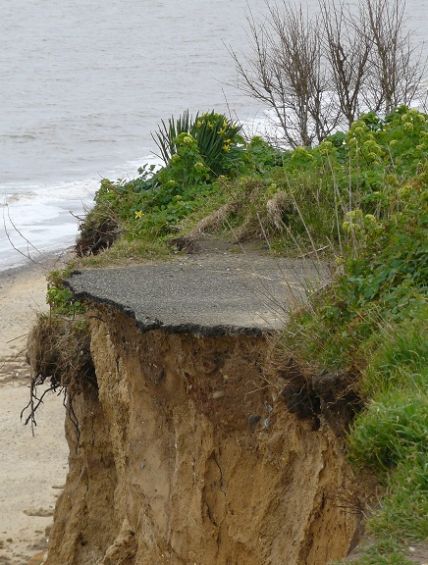|
|
Military
The Roadmap to Nowhere
Saturday, July 24, 2010
 Road to Nowhere
Road to Nowhere
Tokyo -- The 2006 US-Japan Roadmap for Realignment Implementation, which the US forcibly pushed former Prime Minister Yukio Hatoyama to re-endorse on behalf of the new DPJ government, is effectively dead.
The Yomiuri Shinbun reports that Washington informed the government of Guam on Thursday that the Pacific island's infrastructure has not been sufficiently upgraded in order to allow the expanded Marine base to be constructed by 2014, as the agreement stipulates.
Moreover, the US Senate Armed Services Committee, the Senate Appropriation Committee, and the House Appropriations Committee are not complying with the Obama administration's requests for US$452 million to pay for the Guam relocation, offering much smaller sums instead.
The key factor explaining the latest delay is not the resistance of Okinawans, but rather the resistance from Guam. The government of that Pacific island wants to ensure a heavy public investment in their infrastructure before they allow US military plans to go forward.
Obama administration embarrassment over this issue may be one factor behind the conciliatory stance taken by US officials over the Futenma issue in recent days.
Both Secretary of State Hillary Clinton and Secretary of Defense Robert Gates have reacted calmly to the suggestions in Tokyo that no serious efforts would be made to implement the May 28 US-Japan Agreement (essentially the same as the 2006 Roadmap) until after the Okinawa gubernatorial elections in late November.
One of the pillars of the 2006 US-Japan Roadmap for Realignment Implementation is that the 8,000 members of the III Marine Expeditionary Force and their approximately 9,000 dependents would be shifted from Futenma airbase in Okinawa to the US territory of Guam. In return, Japan is expected to build a new Marine airbase at Camp Schwab, which lies along the Henoko coastline of the city of Nago, Okinawa.
The resistance of the people of Okinawa - and for some months the Hatoyama administration itself - to the construction of the Henoko airstrip was the occasion for much heavy-handed diplomacy on the part of the Obama administration against the fledgling DPJ government.
US "alliance managers" and their conservative followers in Japan wrote many an anxious article in which they suggested that Hatoyama's refusal of the 2006 agreement was a betrayal of Tokyo's alliance responsibilities and could be the cause of the weakening of the US-Japan alliance as a whole.
This ugly dispute accelerated Prime Minister Hatoyama's fall from power when it highlighted his indecisiveness and poor management skills.
Now it emerges that the United States too is not able to hold up its end of the bargain, and all of the urgency that was forced upon Tokyo over this issue was essentially false.
The bottom line is that any possible move of the US Marines from Futenma to Guam appears unlikely to occur until at least 2017, if then.
Meanwhile, the aggravation caused by the hosting of US bases in Okinawa is expected to endure, putting pressure on the Japanese government to do something substantial for its people.
Indeed, US-Japan talks began at the Defense Ministry on Thursday aiming at reductions in the so-called "sympathy budget" by which Tokyo pays Washington for maintaining American soldiers in Japan.
The current agreement, which expires in March 2011, has Japanese taxpayers contributing more than US$1.6 billion annually for the upkeep of US forces.
These funds are used, among other things, to finance utility costs, as well as to pay the salaries of the employees of golf courses, bowling alleys, and other entertainment facilities used by US soldiers.
In the past, the DPJ has criticized this arrangement as being inappropriate.
PanOrient News
© PanOrient News All Rights Reserved.
|
|

